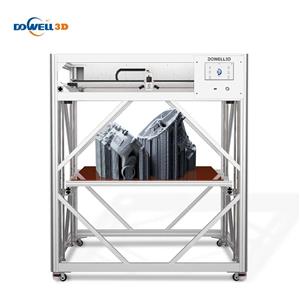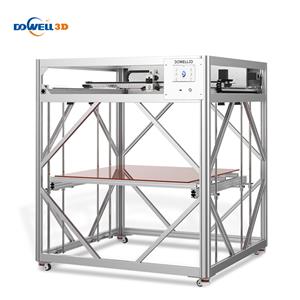The most popular 3D printing materials in FDM and their properties
The most popular 3D printing materials in FDM and their properties
3D printing works with a wide variety of 3D printing materials, among which we can find plastics, resins, metals… and even food! In FDM printing, thermoplastics are used, a type of 3D printer material that at high temperatures becomes liquid allowing it to flow, and when it cools down enough (below its glass transition temperature) it becomes solid.
Let's find the most 3D printing materials for 3D printers in the world of FDM printing, and some with very interesting properties.
A quick list of the 3D printing materials we’ll run through:
PLA
ABS
PET-G
TPU
PVA
PP
PA
PLA
Polylactic acid, more commonly known as PLA, is the most widely used 3D filament because it is so easy to print. This plastic is made from vegetable starches, having the property of being biodegradable and being able to melt at low temperatures.
This material comes in a wide range of colors, which makes it ideal for prototyping or applications where the aesthetics of the object is paramount.
ABS
This plastic is highly used at all professional levels due to its physical properties, being one of the most resistant 3D printing materials due to its high impact resistance and very good tolerance to high temperatures. In terms of chemical resistance, ABS is affected by various solvents and acids, however, it is a property that can be taken advantage of as it allows polishing the surface of the part with an acetone vapor bath, giving it a smooth and shiny finish.
To print this material correctly, it is necessary to have a closed printer to maintain the heat during the manufacturing process. This will keep the ABS from shrinking during the printing of the model and suffering from problems such as warping or cracking.
PET-G
PET-G (glycolized polyethylene terephthalate) is another material widely used in the 3D printing world and could be said to be an intermediate between PLA and ABS. This plastic has good mechanical strength (somewhat lower than ABS) but good chemical resistance, in addition to being easy to print.
Some applications for PET-G are the manufacture of impact-resistant parts, decorative objects and food packaging, making it the most versatile 3D printer material available.
TPU
It is one of the most popular flexible materials in the world of 3D printing. Thermoplastic polyurethane is resistant to friction and wear, which makes it an interesting material to make coatings or protections.
You can find TPU in different degrees of hardness, the most rigid ones being the easiest to print. Consequently, the best advice when printing this material is to print at a low speed, as it will prevent the filament from deforming and jamming.
PVA
With the emergence of the multi-material printing system for 3D printers, support materials emerged. PVA or polyvinyl alcohol is a soluble support material, ideal for printing parts with complex geometries that make it difficult to extract support structures printed with the same material.
PVA is water-soluble and allows to obtain a better surface finish on the contact surface of the support.
We advise you to store this material in a dry and hermetically sealed place so that it is always dry and ready to be used in your 3D printer.
PP
Polypropylene, or PP, is a filament widely used in the industrial sector for the manufacture of functional parts due to its resistance to impact and abrasion, but above all for its excellent resistance to chemicals.
In addition, this material is very light and relatively flexible, so it can be used to create protective elements that are in contact with the skin, such as the inside of helmets and supports for face shields.
Polypropylene is a difficult 3D printer material to print because of its high warping, it is ideal to have a closed printer to have a warm environment to avoid warping and to make use of brim/edge in the adhesion settings to the printing surface.
PA
Nylons or polyamides are materials characterized by their capacity to work continuously at temperatures up to 120ºC. They have high mechanical strength, which makes them ideal for mechanical parts, connectors, protective housings, among others.
It is a hygroscopic 3D printer material (it absorbs a lot of moisture), affecting its thermo-mechanical properties and making it difficult to print, so it is recommended to store it properly. The BCN3D Smart Cabinet has been designed to be the ideal place to store your filaments and keep them dry.





